Managing Type 2 Diabetes at Work: Practical Health Tips for the Office
Workplace Blood Sugar Tracker
Log Your Daily Activities
Today's Log
No entries yet. Add your first entry above.
Today's Summary
No data recorded yet.
Quick Tips for Stable Blood Sugar
- Keep a cooler at your desk with healthy snacks like nuts and fruits.
- Take 2-minute standing or walking breaks every hour.
- Use a CGM for real-time glucose feedback.
- Check your glucose before meals and after lunch.
- Stay hydrated throughout the day.
Living with type 2 diabetes while juggling a full‑time job can feel like walking a tightrope. Between meetings, deadlines, and the fridge humming in the break room, it’s easy to let blood‑sugar control slip. This guide breaks down the biggest work‑related challenges and gives you clear, doable actions so you can stay on top of your health without missing a beat.
Key Takeaways
- Identify the three biggest workplace triggers for blood‑glucose spikes: stress, sedentary time, and irregular meals.
- Use portable snacks, standing desks, and short movement breaks to keep glucose steady.
- Leverage technology like continuous glucose monitors (CGMs) to get real‑time feedback.
- Know your rights under the Americans with Disabilities Act (ADA) and how to request reasonable accommodations.
- Follow a sample daily plan that blends meals, movement, and monitoring for a balanced workday.
Understanding Type 2 Diabetes at Work
Type 2 Diabetes is a chronic condition characterized by insulin resistance and elevated blood‑glucose levels. Key markers include fasting glucose above 126mg/dL, HbA1c (glycated hemoglobin) of 6.5% or higher, and a tendency for the body to struggle with carbohydrate metabolism. When you spend eight or more hours at a desk, these metabolic challenges can be amplified by stress hormones, low‑level physical activity, and irregular eating patterns.
How Work Factors Affect Blood Sugar
Three main workplace elements tend to push glucose numbers up:
- Stress: Deadline pressure triggers cortisol release, which raises blood‑sugar and can blunt insulin’s effect.
- Sedentary behavior: Sitting for long stretches reduces muscle glucose uptake, leading to higher post‑meal spikes.
- Irregular meals: Skipping breakfast or relying on vending‑machine snacks creates unpredictable carbohydrate loads.
Understanding these links lets you target each factor with a specific countermeasure.
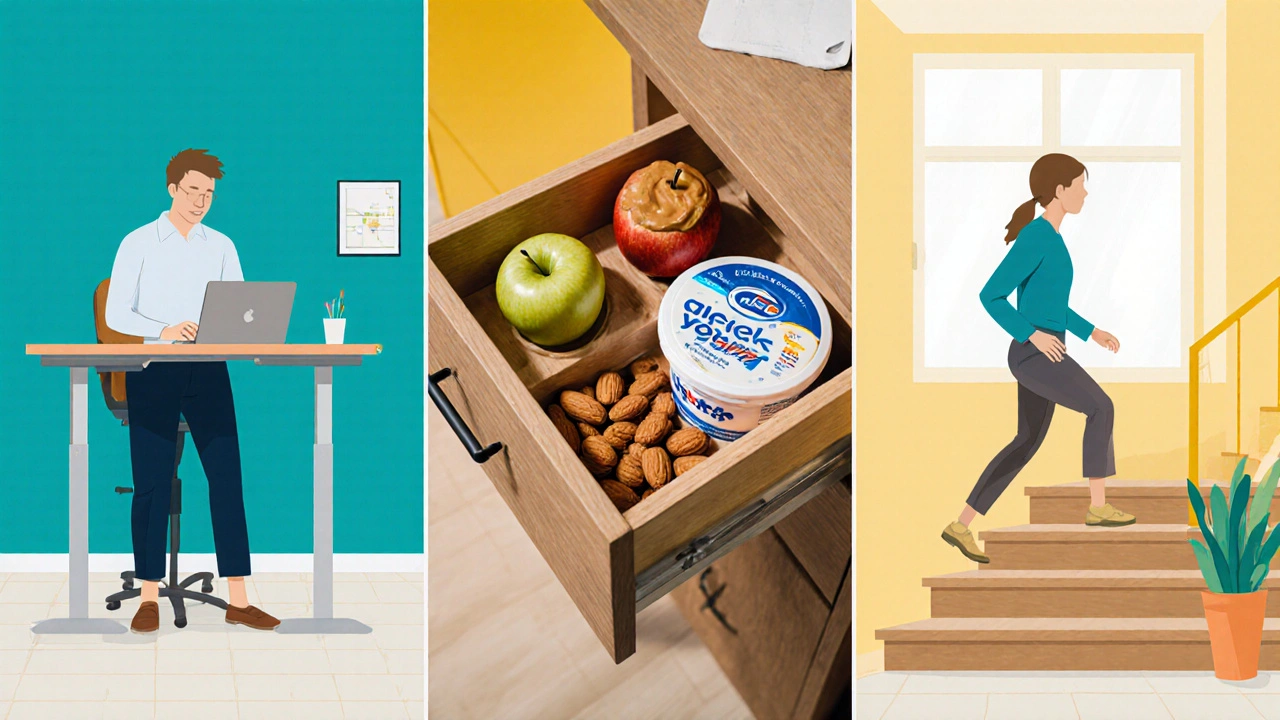
Practical Day‑to‑Day Strategies
Below are bite‑size tactics you can start using right away.
- Meal prep the night before: Portion out a balanced lunch with protein (e.g., grilled chicken), healthy fats (avocado), and low‑GI carbs (quinoa or sweet potato). A pre‑packed meal removes the temptation to grab a high‑sugar sandwich.
- Smart snack stash: Keep a drawer of low‑glycemic options-almonds, Greek yogurt, or a small apple with peanut butter. When cravings hit, you have a controlled carb choice.
- Carb counting on the fly: Use a phone app to log foods quickly. Aim for 45‑60g of carbs at main meals and 15‑20g per snack.
- Hydration reminder: Dehydration can mimic low‑blood‑sugar symptoms. Set a timer to sip water every hour.
Movement at the Desk
Even a few minutes of activity can boost muscle glucose uptake.
- Standing desk: Alternate 30‑minutes sitting / 30‑minutes standing. Studies show a 12% drop in post‑prandial glucose when standing for half the meal time.
- Micro‑breaks: Set a calendar reminder to stand, stretch, or walk for two minutes every hour. A brief stair climb burns about 10kcal and spikes insulin sensitivity.
- Lunchtime walks: A 15‑minute brisk walk after eating can cut the post‑lunch glucose peak by up to 30%.
Using Technology to Stay in Control
Modern devices make monitoring less intrusive.
Continuous Glucose Monitor (CGM) provides real‑time glucose trends via a tiny sensor under the skin. Most CGMs alert you when levels dip below 70mg/dL or surge above 180mg/dL, so you can adjust your food or activity before a problem escalates. Pair the CGM with a smartphone app to log meals and activity, creating a feedback loop that reveals which work habits are most impactful.
Communicating with Employers
Under the Americans with Disabilities Act (ADA), you have the right to reasonable workplace accommodations. Common requests for employees with type 2 diabetes include:
- Flexible break times for medication or glucose checks.
- Permission to store a cooler and a medical‑grade snack in the workspace.
- Access to a private area for blood‑sugar testing.
- Adjustment of shift schedules to avoid night‑time work if it disrupts sleep patterns.
When you’re ready to talk, come prepared with a brief written summary of your needs and, if possible, a note from your healthcare provider. Most HR teams appreciate a clear, solution‑focused request.

Sample One‑Day Meal & Activity Plan
This example blends everything we’ve covered: balanced carbs, strategic movement, and technology support.
| Time | Activity | What to Eat/Do |
|---|---|---|
| 07:30 | Morning routine | Breakfast - ½ cup oatmeal, 1 tbsp chia seeds, ½ cup berries, 1 boiled egg. CGM reading check. |
| 09:45 | Micro‑break | 2‑minute stair walk, sip water. |
| 12:00 | Lunch | Grilled chicken salad with mixed greens, cherry tomatoes, ¼ avocado, ½ cup quinoa. Light vinaigrette. Record carbs (≈45g). |
| 13:00 | Lunchtime walk | 15‑minute brisk walk outdoors. |
| 15:30 | Snack | Greek yogurt (plain, ¾ cup) + a few almonds. Check CGM trend. |
| 17:00 | End of shift | Finish any pending tasks, set reminder for evening blood‑glucose check. |
| 18:30 | Dinner | Baked salmon, roasted broccoli, ½ cup brown rice. Aim for 50‑60g carbs total for the meal. |
Common Pitfalls & How to Avoid Them
- Skipping meals: Leads to reactive hypoglycemia later. Keep a snack handy.
- Relying on “quick fixes”: Energy drinks spike glucose then crash. Opt for balanced snacks instead.
- Ignoring stress signals: When you feel overwhelmed, take a five‑minute breathing exercise; cortisol drops within minutes.
- Not using available tools: Many insurers cover CGM devices; check your health plan before buying.
Putting It All Together
Managing type 2 diabetes workplace health isn’t about overhauling your entire routine overnight. Start with one change-like adding a 2‑minute standing break every hour-and build from there. Over weeks, you’ll notice steadier glucose numbers, more consistent energy, and fewer “I feel off” moments. Remember, small habits compound, and you have the right to request accommodations that keep you safe and productive.
Frequently Asked Questions
Can I eat lunch at my desk without hurting my diabetes control?
Yes, as long as you choose balanced meals with protein, healthy fats, and low‑GI carbs. Using a cooler under your desk to keep food fresh and portion‑controlling ahead of time helps you avoid impulse high‑sugar choices.
How often should I check my blood sugar at work?
If you use a CGM, alerts will guide you automatically. Without one, aim for a pre‑breakfast check, before lunch, and after dinner - roughly three times a day - plus any time you feel symptoms.
What legal rights do I have to store a medical snack at my workstation?
Under the ADA, you can request a reasonable accommodation such as a small refrigerator or a designated space for medication and snacks. Provide a brief written request and, if needed, a doctor’s note.
Are there quick exercises I can do without leaving my desk?
Yes. Try seated leg lifts, desk push‑ups, or a 30‑second march in place. Even these micro‑movements improve insulin sensitivity over the course of the day.
What should I do if my blood sugar drops during a meeting?
Discreetly check your CGM or finger‑stick, then consume a fast‑acting carbohydrate like a glucose tablet or a small fruit juice. Inform a trusted colleague if you need a moment to recover.

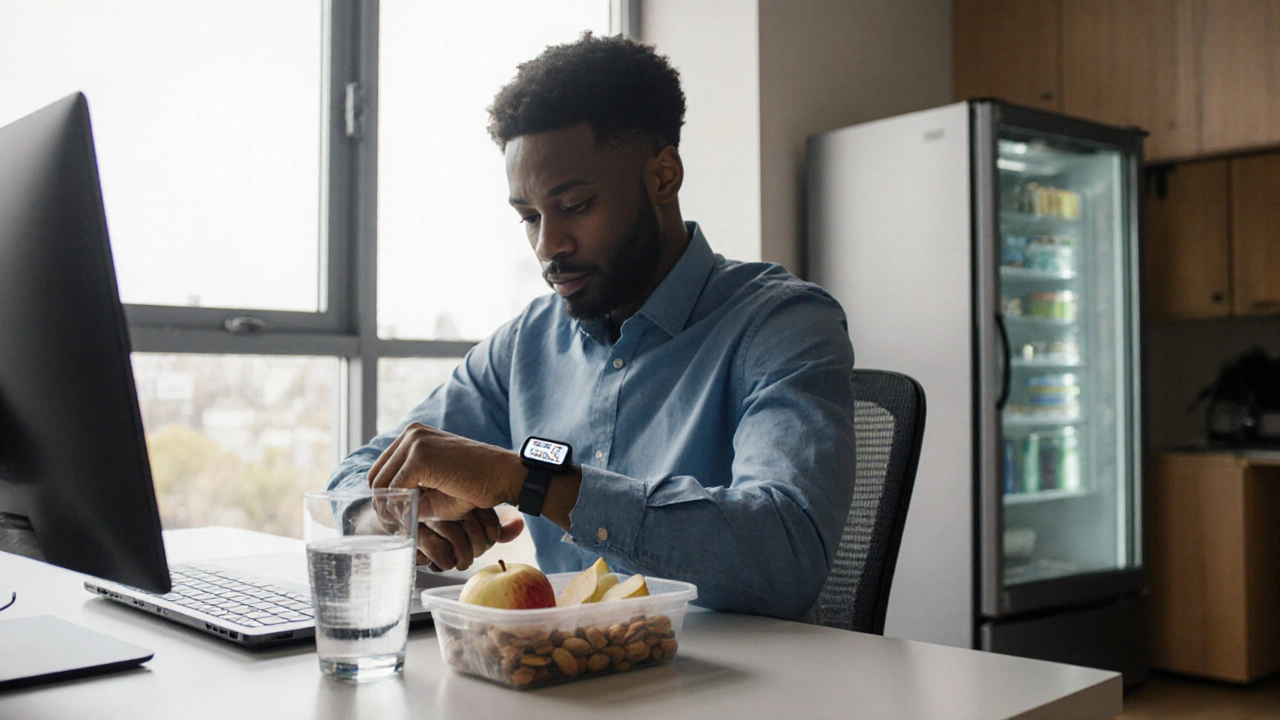
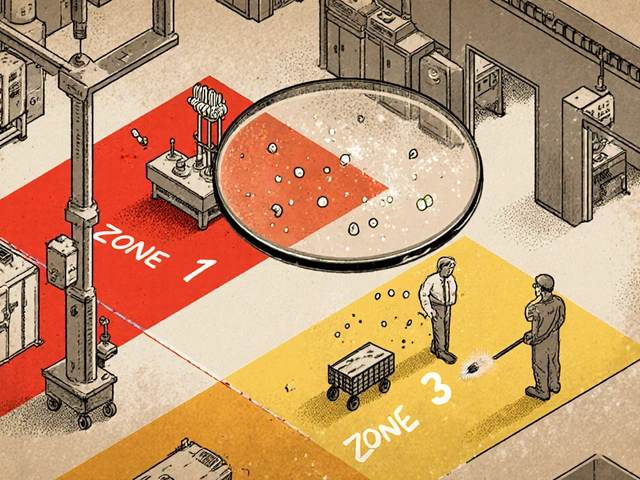

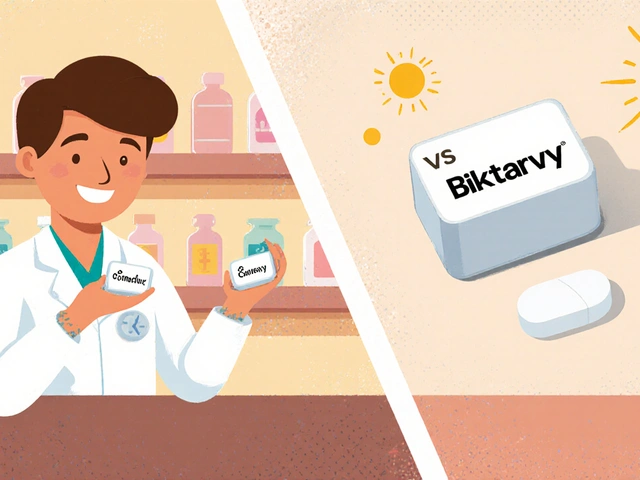

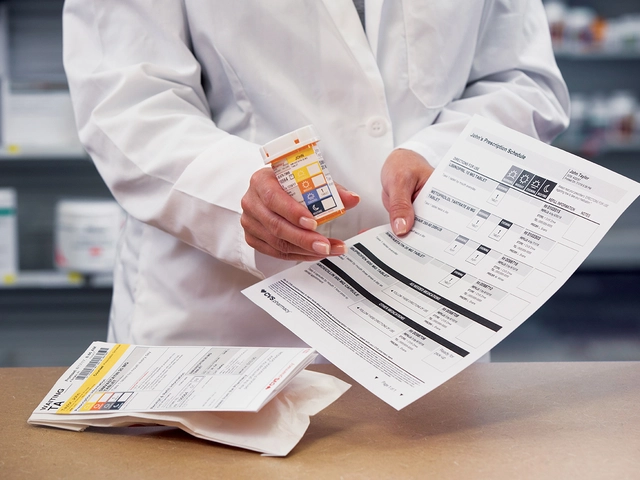
10 Comments
Jordan Schwartz
October 8, 2025 at 18:01
Staying on top of blood glucose at the office is doable with a few consistent habits.
First, keep a small cooler in your workspace so you always have a low‑glycemic snack within reach.
Second, set a timer on your phone or computer to remind you to stand up and move for two minutes every hour.
Third, use a continuous glucose monitor or a quick finger‑stick before meals and after lunch to catch any spikes early.
Plan your meals the night before and portion them into containers so you avoid the vending machine temptation.
Include protein, healthy fats, and low‑GI carbs in each meal to smooth out the glucose curve.
Hydration matters; sip water regularly and keep a reusable bottle on your desk.
If you feel stressed, practice a five‑minute breathing exercise to lower cortisol, which can raise blood sugar.
Take a brief walk after eating – even a 10‑minute stroll can cut the post‑meal glucose rise significantly.
Talk to your manager about flexible break times for medication and glucose checks; it’s a reasonable accommodation under the ADA.
Request a private space for testing if you need privacy, and a small fridge for storing snacks and insulin.
Nitin Chauhan
October 14, 2025 at 03:00
Prep your lunch the night before and stash nuts and Greek yogurt at your desk for steady energy.
Angelo Truglio
October 18, 2025 at 18:06
Wow!!! This whole "just stand up every hour" thing is sheer pandemonium!! 😱 You think a two‑minute walk will magically cure the chaos of corporate life?!? The stress hormones are a beast, and no amount of mini‑breaks will tame them without a full‑blown overhaul of your environment!!! 😡
Dawn Midnight
October 23, 2025 at 09:13
The suggestion to "keep a cooler at your desk" is grammatically correct, but the article should use "your" instead of "a" when referring to a specific workspace.
frank hofman
October 28, 2025 at 00:20
lol i think the whole "2 min stand" hype is wack 😂 but hey if it helps you not feel like a zombie at 3pm, go for it! 🍕
Dannii Willis
November 1, 2025 at 15:26
Thanks for the practical tips; I’ll definitely try the cooler trick and the hourly walks. It’s nice to see guidance that’s both realistic and supportive.
Robyn Du Plooy
November 6, 2025 at 06:33
From a systems‑engineering perspective, integrating a CGM data stream with your workplace wellness portal can create a closed‑loop feedback mechanism, optimizing insulin dosing in real time while minimizing cognitive load.
Boyd Mardis
November 10, 2025 at 21:40
Listen, if you want results, implement the standing desk and schedule micro‑breaks now.
ayan majumdar
November 15, 2025 at 12:46
Short tip: walk.
Johnpaul Chukwuebuka
November 20, 2025 at 03:53
Great advice! Keep it simple: drink water, move a bit, and check your sugar. You’ve got this!